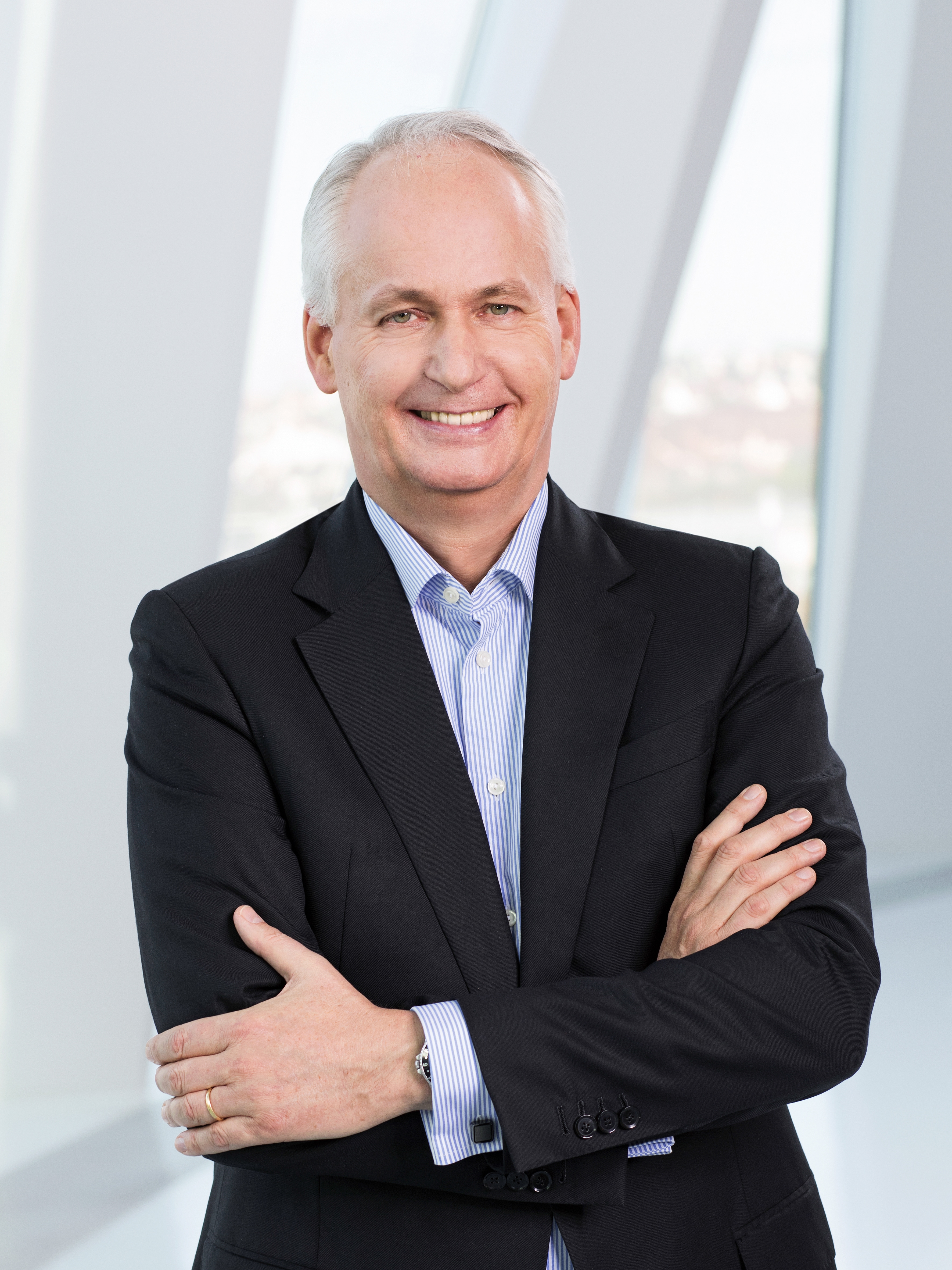Under its “Made in China, for China” ethos, Daimler has embraced the notion that success in China requires long-term commitment to the local market and its customers.
For example, its Beijing Benz Automotive Co. (BBAC) joint venture with Beijing Automotive Group Co. (BAIC) has produced a staggering two-million-plus cars since the first E-Class peeled off the production line in 2006. Those vehicles have been supported by local research and development facilities to delight Chinese customers with specialized market features.
Daimler continues to focus on localization, last year committing €1.5 billion together with BAIC to operate a second production location for high-quality premium vehicles.
Bringing the production of electric cars under Mercedes-Benz’s product and technology brand EQ to China is another testament to Daimler’s long-term commitment to the Chinese auto market. Meanwhile, together with BYD, Daimler will further develop the home-grown new energy vehicle (NEV) brand DENZA, with the all-new DENZA X due to hit the market by early 2020.
In addition, Daimler this year agreed to form a 50–50 joint venture with Zhejiang Geely Holding Group to operate the smart brand, and to produce an entirely new generation of electric cars in China, with global sales due to start in 2022. Daimler also expects its R&D Tech Center China, set to open in 2020, to drive further innovation in the Chinese market. Along with several other landmark investments announced in the past few years, these deals speak to the confidence of Daimler’s commitment to the market, which has been articulated in China for the last seven years by Hubertus Troska.
Under his watch as member of the board of management of Daimler responsible for Greater China, the German group has grown into one of the dominant players in China’s premium segment, from a less competitive position just seven years ago.
Troska sat down with McKinsey senior partner Daniel Zipser to elucidate the strategy behind Daimler’s success, why Mercedes-Benz is positioned to take advantage of China’s unique consumer profile, and the psychology behind Chinese customers’ appetite for the ultra-luxury Mercedes-Maybach S-Class.
McKinsey: Daimler has achieved a remarkable leadership position in China’s competitive market for premium cars. What are the major factors behind that success?
Hubertus Troska: China is by far the biggest car market in the world, having achieved in 10 to 15 years a level of development that took almost a century in Europe and the United States. Mercedes-Benz in China has also changed dramatically, having advanced from a position of lesser strength seven or eight years ago to become one of the dominant players in the premium market.
The most important success factor is having a dedicated Sino-international team, wholly committed to delivering exciting products and services to our Chinese customers, and supported by a strong local production and R&D footprint. Number two is nurturing the strength of the Mercedes-Benz brand and adapting its positioning in the China market. Last but not least is our mutually respectful and strong relationship with our Chinese partners, which is crucial when doing business in China.
McKinsey: Since summer of last year, the overall China auto market has experienced a meaningful dip, and we've seen double-digit sales declines, even as the premium market has held up fairly well. Has the downturn affected your China strategy?
Hubertus Troska: The pullback this year and through part of last year is a normalization process of the overall market, following more than a decade of impressive growth. But we still see continued demand for premium products. We are up 4 percent versus last year—and I'm cautiously optimistic also for the years to come. China still offers enormous potential, so our strategy remains broadly consistent to focus on our customers.

China auto consumer insights 2019
McKinsey: How would you describe Chinese auto buyers, and how might they compare with their German and American peers?
Hubertus Troska: China has the world’s most fascinating customer base. It is not only our biggest market but also hosts by far the youngest customers in the world. The average premium buyer of Mercedes-Benz in China is less than 36 years old. That’s almost 20 years younger than the typical German premium buyer, and almost 10 years younger than their average American counterpart.
Our Chinese customers are young and ambitious people with high expectations on products and services. They are tech savvy and interested in innovation. Moreover, they truly appreciate brands that deliver great design and craftsmanship. And, believe it or not, about 30 percent are first-time buyers. Needless to say, our first priority is to give them the perfect Mercedes-Benz experience when they make their first premium buy.
McKinsey: How is China’s fabled role as the world’s most digital nation affecting the automotive industry?
Hubertus Troska: Living in China, it is clear that the people here are “always on.” The breadth of digital services available and the predominance of online payments are unparalleled. Chinese consumers want to bring this lifestyle into their cars and into our brand environment. They expect to carry all aspects of online connectivity into their vehicles. We have state-of-the-art connectivity in our cars with MBUX—Mercedes-Benz User Experience—and our strategy is to offer specifically Chinese digital solutions. Our models carry special China-focused digital features that have a very high take rate. Clearly, digitalization is already massively impactful, and it will continue to grow in importance going forward.
McKinsey: Daimler maintains several joint ventures with Chinese OEMs, while working with major dealer groups here. What advice would you give to foreign companies trying to work in partnership arrangements in the China market?
Hubertus Troska: In the automotive industry, having strong local partners is very important for understanding the market, the customers, and business development. We’re fortunate to have three strong industrial partners. BAIC is the longest partnership we have, and it has been Mercedes-Benz’s main partner in China for over a decade.
Given the importance of new energy vehicles, we started developing a Chinese electric car early on with BYD, and that partnership continues under the DENZA brand that we jointly developed in China. Our largest shareholder, Geely, is another industrial partner, and together we’re developing—among other projects—a joint venture to take the next-generation smart brand fully electric for the global market.
We operate over 600 retail outlets in nearly 230 cities in China and partner with leading Chinese dealer groups, which along with our joint-venture partners underpin the success of our business here.
McKinsey: Even amid a dip in the overall auto market and a wider economic slowdown in China, the ultra-luxury Maybach is selling 600 units per month. What attracts Chinese consumers to the Maybach brand?
Hubertus Troska: This young automotive market is strongly motivated to upgrade, to embrace premiumization.
We are fortunate to be a dominant player in the premium market, the S-Class segment. The very top model of the S-Class segment, the Mercedes-Maybach S-Class, is indeed performing well. The Maybach offers the most space in the luxury-sedan segment, coupled with all the high-tech features of Mercedes-Benz. At the same time, it appears somewhat understated from the outside. The combination of the mentioned features is highly appreciated in the current Chinese business environment.

Reimagining mobility: A CEO’s guide
McKinsey: At the end of this year, you start producing electric-vehicle models in China. What does the future hold for electric vehicles here, and specifically for Daimler?
Hubertus Troska: China is not only the biggest auto market, it’s also the world’s biggest market for new energy vehicles. It has the vision and the sales potential, backed by strong government support.
At the global level, we flipped the switch by putting billions of euros behind the launch of ten new electric cars within the next several years. We will localize the majority of them in China, starting with the EQC at the end of this year. Meanwhile, we will further develop our DENZA brand with the all-new DENZA X due to hit the market by early 2020. And these will also be followed by the production of smart electric vehicles in China later.
McKinsey: What’s your view on Chinese electric automakers’ global aspirations?
Hubertus Troska: Local brands form the biggest part of the electric-car market today, and they’re clearly shaping up to leverage the scale of the domestic market to make an impact worldwide. On the other hand, we have substantial experience in building cars, and we’re investing heavily in electric. As we like to say, “Electric now has a Mercedes.” While volume brands now command the lion’s share of the electric market, more premium electric cars on the street—including from Mercedes—is only likely to fuel additional demand for the segment.
McKinsey: Electric and autonomous driving is drawing interest and substantial investment globally, as well as in China. What is Daimler doing in this space in China, and how do you see the market developing?
Hubertus Troska: We refer to the future of automotive with the four letters “CASE”: Connected, Autonomous, Shared and Services, Electric. Autonomous vehicles will have a huge impact on the industry, but the shift toward fully autonomous driving is not going to happen overnight. We will see a step-by-step evolution that has already begun. There are already advanced driver assistance systems in our cars that allow you to drive hands-off for longer periods, both stop and go, and on the highway. And, together with Bosch, we have pioneered the world’s first automated driverless SAE Level 4 parking system.
These experiences will only become more widespread, and China will play a very important role. For example, we are a founding member of Baidu’s open-source autonomous-vehicle technology platform, Apollo. We were also the first foreign company to obtain an autonomous test-driving license in Beijing and are working with several universities on the deployment of autonomous technology in China.
McKinsey: What’s the biggest challenge in the China market, and how are you tackling it?
Hubertus Troska: CASE is changing the industry dramatically on a global scale, and these changes will occur most rapidly in China. Our biggest challenge, and that of any automaker, is to stay ahead of the transformation. This requires huge investment to shape or co-shape industry change, and in our case to deliver the Mercedes of electric cars, the Mercedes of autonomous cars, and the Mercedes of connected cars. In this we have an advantage as technological innovation sometimes comes with higher costs, and the premium customers, our customers, tend to be able to afford innovative technology first.
McKinsey: What has it been like working here in China, and what advice would you give other executives in this market?
Hubertus Troska: I’ve worked at Daimler for more than 30 years across five countries, but these seven years in China have been the most formative of my life. I continue to be deeply impressed by the ambition, the hardworking spirit, the rich culture, and the kindness of Chinese people. For a car guy—especially for a car guy—China is the place to be.



